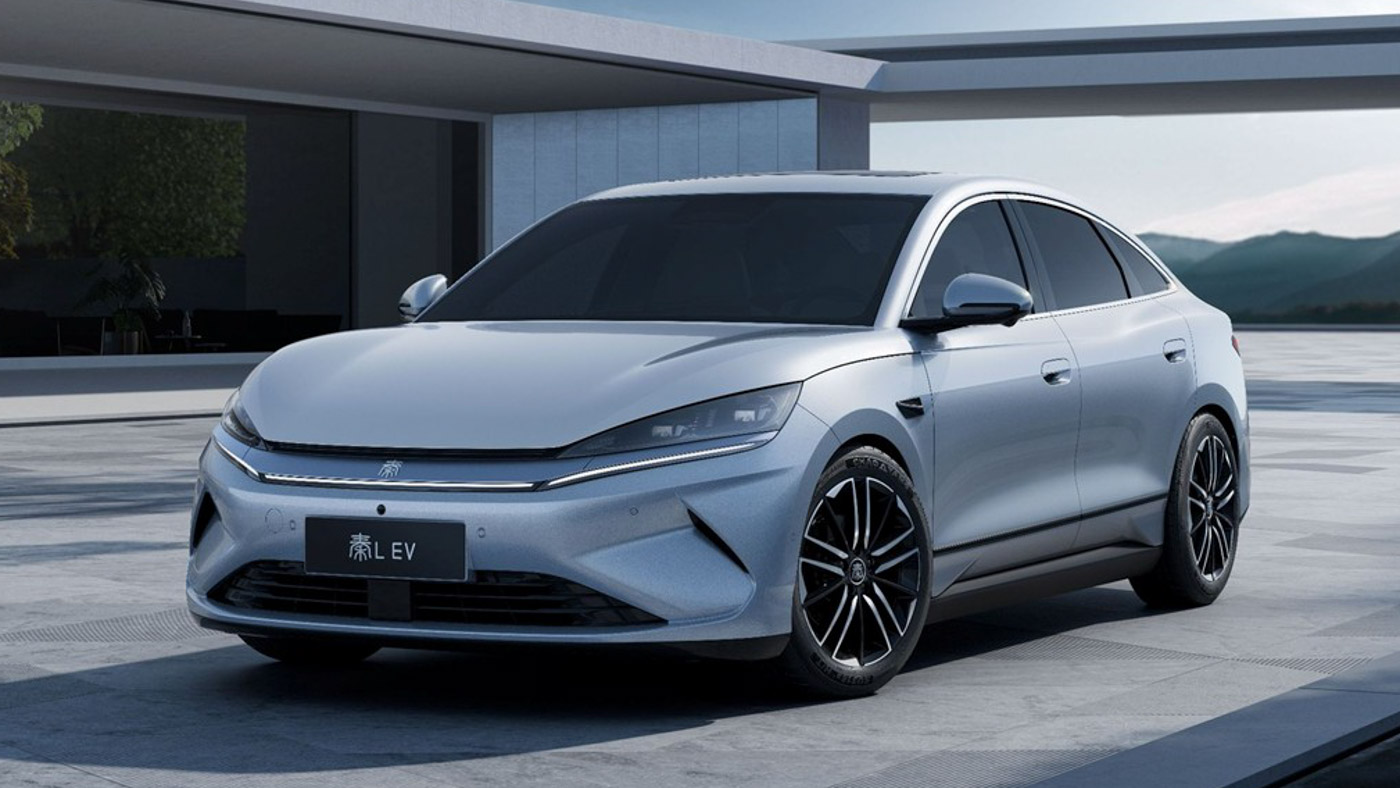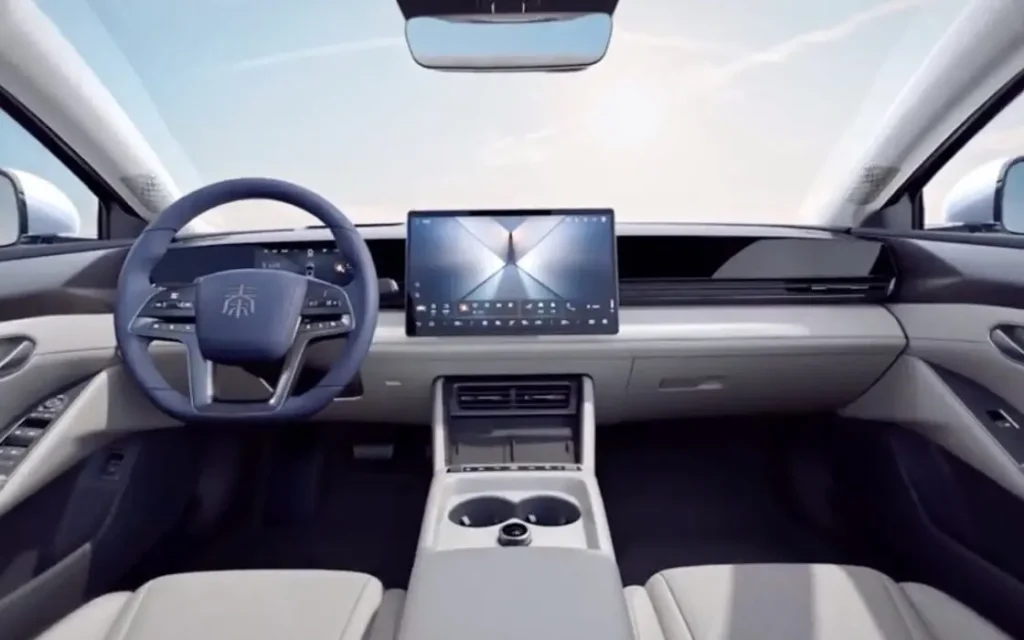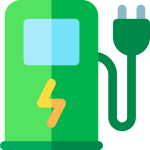
BYD’s strategy of pushing affordable electric vehicles (EVs) into right‑hand‑drive markets has taken another step forward with the export of its recently launched Qin L EV – rebadged for Malaysia as the Seal 6. Introduced in China earlier this year at a very aggressive price point (the Qin L’s Chinese starting price was the rough equivalent of A$26,300), the model has now appeared in Malaysia at an entry price around A$36,000. The move reinforces BYD’s push down‑market with a compact, efficient sedan designed to appeal to owner‑drivers, fleet operators and ride‑share services.
Key specs and features
- Powertrains: The Seal 6 is offered with two single‑motor options: a 95 kW unit and a 160 kW unit. Torque figures are roughly 220 Nm and 330 Nm respectively, yielding 0-100 km/h times of approximately 10.9 seconds and 7.5 seconds.
- Battery: Malaysian spec cars use BYD’s LFP “Blade” battery in a 56.6 kWh configuration. In China, a smaller 46.1 kWh pack is also offered.
- Range: BYD quotes CLTC figures of around 470 km for the smaller pack and 545 km for the larger pack. The industry‑standard WLTP conversion suggests a practical WLTP range likely between about 400-450 km for the larger pack; real‑world highway and air‑conditioning use will reduce that figure further.
- Charging: DC fast‑charging capability up to 100 kW is claimed, with a 30-80% charge time of roughly 24 minutes. AC charging is at 7 kW, consistent with several other affordable BYD models.
- Efficiency and weight: BYD cites CLTC energy consumption near 10.8 kWh/100 km, making the model competitive on efficiency for its class. Kerb weights in Malaysian spec are around 1,780-1,800 kg depending on trim.
- Design and interior: The Seal 6 is a conventional mid‑sized sedan with improved aerodynamics (flush door handles) and a 4.7 m length that is marginally smaller than BYD’s larger Seal model. Interior tech includes a rotatable 12.8‑inch BYD infotainment display. Practical touches include a frontal luggage/storage compartment claimed at about 65 litres.

Technology and safety
BYD has promoted the Qin L/Seal 6 with its latest smart driving suite, marketed under names such as “God’s Eye” in some markets. This bundle typically combines cameras, radar and advanced driver assistance algorithms to provide assisted driving features; the exact specification and level of functionality will depend on regional homologation and local regulations. Buyers should note that safety equipment fitment, available active safety features and crash ratings (ANCAP or local equivalents) may differ between markets and may not yet be available for every right‑hand‑drive territory.
What the Malaysia launch signals
Malaysia is an important right‑hand‑drive stepping stone for Chinese brands seeking to expand across Southeast Asia, and BYD’s decision to debut the Qin L there under the Seal 6 name indicates a clear export intent for this platform. For Australian observers, the Malaysia launch is significant because it clears a key logistical and regulatory hurdle used by many manufacturers before moving into other RHD markets. That said, an Australian arrival is not automatic – vehicles must pass Australian Design Rules (ADRs), local crash testing expectations and market certification before sale.
Implications for the Australian market
- Price positioning: If BYD moves the Seal 6 into Australia, it would likely compete as a budget to mid‑range sedan aimed at buyers trading up from internal combustion small sedans (Toyota Corolla, RAV4‑sized alternatives) and operators switching fleet/ride‑share cars to EVs. Final Australian retail pricing would reflect import costs, compliance, freight and dealer margins, so a direct A$‑for‑A$ comparison with Malaysian pricing would be optimistic.
- Fleet appeal: The combination of a modest purchase price, efficient LFP chemistry Blade battery (known for safety and longevity) and a WLTP‑competitive range makes the model attractive for fleet and ride‑share operators, who prioritise low total cost of ownership and predictable running economics.
- Charging infrastructure fit: Peak DC charging at 100 kW makes the Seal 6 suitable for current fast‑charging networks, though operators and private owners should expect slower on‑board AC charging (7 kW) relative to some rivals that offer 11 kW or higher as standard.
- Competition: In Australia the Seal 6 would sit beneath or alongside models such as BYD’s own Atto 3, small EVs from MG, Hyundai and Kia, and increasingly competitive EV offerings from Tesla’s used market and local marques. Its success will hinge on demonstrated real‑world range, safety credentials and post‑sales support.
Caveats and adoption hurdles
- Homologation and certification: BYD must complete ADR compliance for any Australian launch; this process includes safety and emissions-related testing and can add months to the timeline.
- ANCAP rating: As of this writing there is no publicly confirmed ANCAP rating for the Qin L/Seal 6 in RHD spec. Many buyers (and fleet managers) will wait for independent crash test results.
- Feature parity: Expect feature and software differences between China, Malaysia and potential Australian‑spec cars. Local regulations and consumer expectations often mean safety and convenience features are altered or added for our market.
- Real‑world range and conditions: Australian driving patterns (long distances, high‑speed highways, hot climates) can reduce achievable range compared with CLTC figures; buyers should plan on conservative estimates if range anxiety or route planning matters.
Outlook
BYD’s rollout of the Qin L as the Seal 6 in Malaysia underscores the company’s strategy of globalising lower‑cost EVs and broadening its model mix beyond its earlier SUV and larger sedan offerings. For Australia, the car represents another example of how quickly Chinese EV manufacturers are expanding into RHD markets. If BYD elects to homologate and retail the Seal 6 in Australia, it could strengthen competition in the lower‑priced EV segment and accelerate fleet electrification – provided BYD can meet local safety, warranty and servicing expectations.
Conclusion
The arrival of the Qin L (Seal 6) in Malaysia is a notable milestone for BYD’s export strategy and for the evolving affordable EV segment. The sedan offers respectable efficiency, pragmatic range for its battery size, and charging capabilities that suit urban and short‑distance fleet use. For Australian consumers and fleet managers, the Seal 6 is worth watching – but its ultimate impact will depend on BYD’s decisions around homologation, local pricing, warranty and service network. Until independent safety ratings and Australian specifications are available, buyers should treat overseas specifications as indicative rather than definitive.
FAQs
Will the BYD Qin L / Seal 6 be sold in Australia?
BYD has not publicly confirmed an Australian launch for the Qin L / Seal 6 at the time of the Malaysian launch. Any Australian introduction would require compliance with Australian Design Rules (ADRs), and BYD would likely announce timing, specification and pricing only after those steps are complete.
How far will the Seal 6 go on a single charge in real‑world use?
BYD’s CLTC claims for the larger battery are around 545 km, which converts to roughly 400-450 km under WLTP estimates. In real‑world Aussie conditions – with higher speeds, air‑conditioning use and mixed driving – expect lower figures; planning on 300-400 km for typical mixed driving is prudent until independent tests are published.
What charging speeds can owners expect?
The Seal 6 is advertised with up to 100 kW DC fast‑charging and 7 kW AC onboard charging. A 30-80% DC charge in roughly 24 minutes is a typical headline time; real‑world session times depend on ambient temperature, state of charge and charger performance.
Is the Seal 6 safe?
BYD markets advanced driver assistance under names such as “God’s Eye.” However, ANCAP (or equivalent independent crash test) results for the Seal 6 in right‑hand‑drive specification may not be available immediately. Prospective buyers should wait for independent crash testing and examine the local spec’s active safety kit before purchasing.
Who is the target buyer for the Seal 6?
The car is aimed at buyers seeking a cost‑effective EV sedan: private buyers wanting an affordable EV, ride‑share drivers, and small fleets looking to electrify at a lower upfront cost. Its combination of Blade battery safety, competitive range and efficient consumption makes it particularly attractive for fleet operators.
How does it compare to BYD’s Atto 3 or other competitors in Australia?
Compared with BYD’s Atto 3, the Seal 6 is a compact sedan rather than a compact SUV, with different packaging and aerodynamic advantages. Pricing and specification differences will determine competitiveness against models from MG, Hyundai, Kia and others. Total cost of ownership, service network and warranty will be key deciding factors for many buyers.
About EV Evolution
EV Evolution is the leading online platform dedicated to Australian electric vehicle owners and enthusiasts. We foster a vibrant community, delivering essential EV news and insights, and enhancing user engagement through our innovative, AI-powered chatbot for dynamic discussions. Our mission is to empower Australian electric vehicle owners and enthusiasts by fostering a vibrant, AI-driven online community that connects, informs, and advances the nation’s electric vehicle landscape.




